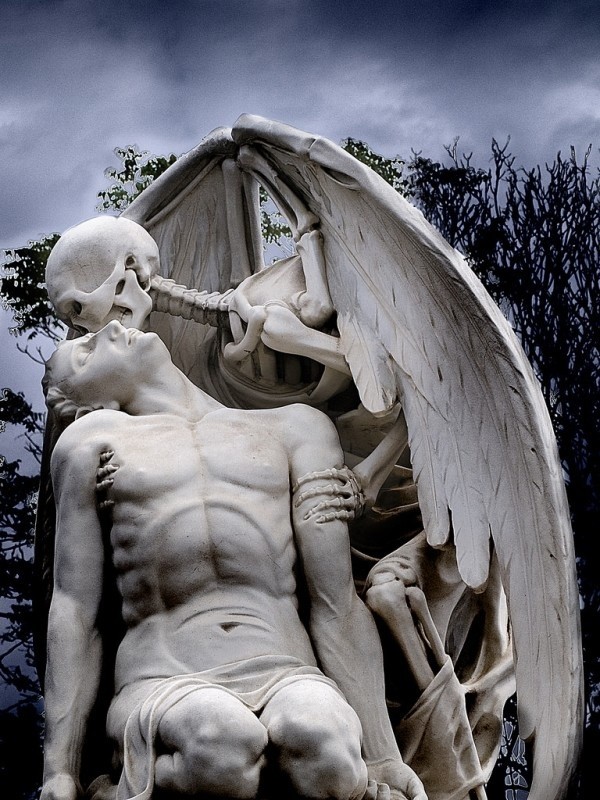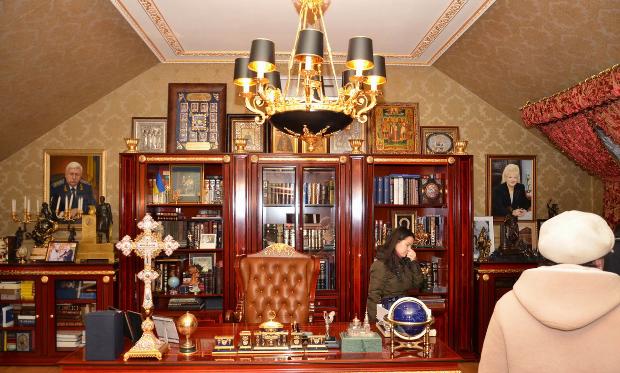When asked about how he created his statues, Auguste
Rodin, the great French sculptor, quoted the great Michelangelo:
’’Sculpture is easy — you just go down to the skin and stop.’’
That’s probably why a true masterpiece always seems like something
divine: you look at it and think that only a genius could have seen
such beauty in a simple chunk of stone.
That's why today we’re going to share the unique stories behind
some of the most significant artworks with you.
1. The horned Moses
Michelangelo made a sculpture of Moses with a peculiar feature —
a pair of horns. Many art historians explain it by his
misinterpretation of the Bible: the Book of Exodus says that it was
hard for the Jews to look at the face of Moses when he descended
Mount Sinai with the Lord’s stone tablets. The Hebrew word used
here in the Bible can be translated both as ’’radiance’’ and as
’’horns,’’ but the context makes it pretty obvious that Moses’ face
was exuding rays of light, and not horns.
2. Colorful antiquity
It was long thought that ancient Roman and Greek white marble
statues were always plain white. But according to recent studies,
they may have initially been painted in many different colors that
dwindled over time, and finally disappeared completely due to
exposure to light and wind.
3. The Suffering of the Little Mermaid
The Mermaid statue in Copenhagen is one of the most unfortunate
sculptures in the world, being the favorite object of vandalism.
Its history has many twists and turns. It was broken and sawed to
pieces more than once, and even today you can find ’’scars’’ on the
Mermaid’s neck that appeared when the statue’s head had to be
replaced. The sculpture was beheaded twice — once in 1964, and the
second time in 1998. In 1984, vandals cut off its right arm. On
March 8, 2006, the poor mermaid was found with a dildo in its hand
and splattered all over with green paint, while ’’March 8’’ was
scratched on its back. Finally, in 2007, the town government
proclaimed that the Little Mermaid may be moved farther into the
harbor to prevent vandalism and constant attempts of tourists to
climb on the statue.
4. The Kiss without a kiss
’’The Kiss,'’ the well-known masterpiece by Auguste Rodin, had
originally been named ’’Francesca da Rimini’’ after a 13th century
Italian noblewoman whose name was immortalized in Dante’s
’’Inferno’’ (Circle 2, Canto 5). The lady fell in love with her
husband Giovanni Malatesta’s younger brother, Paolo, and they were
reading the story of Lancelot and Guinevere when Giovanni found and
killed them both. The sculpture shows Paolo holding a book in his
hand. However, the lovers here do not touch each other’s lips,
which gives us a hint that they were murdered without them
committing a sin.
The more neutral title for the sculpture, ’’The Kiss,’’ was
given to it later by critics who saw it first in 1887.
5. The secret of the marble veil
One look at these statues whose faces are covered by a
semi-transparent veil makes you wonder how this could ever have
been made with simple stone. And the secret of this is in the
marble used for the work itself — in particular, its structure. The
block that eventually became the sculpture had to have two layers,
one of them more transparent, and one more thick than the other.
Such stones are difficult to find, but they really do exist. The
artisan had this idea on his mind, and he knew what to look for.
Monti worked the marble, preserving the normal surface texture,
while carving along the edge separating the solid part from the
transparent one. As a result, the remains of the transparent part
looked literally transparent, thus creating the veil effect.
6. The perfect David made of corrupt marble
This famous statue of David was made by Michelangelo from a
chunk of white marble left over from another sculptor, Agostino di
Duccio, who tried to work with this piece, but quit after several
unsuccessful attempts.
Although David has been considered the ideal of male beauty, it
is in fact not so perfect after all. He is actually cross-eyed.
This was discovered by Marc Levoy, a professor at Stanford
University, who examined the statue through scanning it with a
laser computer technology. The ’’eye defect’’ of this 16-feet tall
sculpture is almost incomprehensible, as it is standing on a tall
pedestal. The specialists think that Michelangelo made this
imperfection on purpose so that David looked impeccable on both
sides.
7. Death unto art, art unto death
The most mysterious sculpture in the Poblenou cemetery in
Barcelona is entitled ’’The Kiss of Death’’but its creator is still
unknown. The statue is thought to have been made by Jaume Barba,
but there is an alternative version of this story claiming that it
was a work of Joan Fonbernat. The sculpture is situated in one of
the farthest corners of the Poblenou cemetery, and it became the
inspiration for Ingmar Bergman when he decided to make ’’The
Seventh Seal,’’ a movie about the fallen Knight and Death.
8. The arms of Venus de Milo
This statue of Venus is one of the best-known sculptures in the
Louvre in Paris. A Greek peasant is said to have found it in 1820
on the isle of Milos. When discovered, the statue was broken into
two large pieces, and in her left hand the goddess was carrying an
apple, while her right was holding her dress from falling on the
ground. When they saw it, some French navy officers, recognizing
its historic value, ordered the marble statue to be taken from the
island, but the people carrying it got into a quarrel while lifting
the Venus over the rocks to the waiting ship, and both her hands
broke off. Being utterly exhausted, the sailors refused to go back
and look for the limbs.
9. The beautiful imperfection of the ’’Nike of Samothrace’’
This majestic statue of Nike was found in 1863 on the island of
Samothrace by the French consul and amateur archaeologist Charles
Champoiseau. The sculpture is made of golden Parian marble, and on
the island, it was the paragon of the sea gods’ altar. Scientists
say that the Nike was created in the 2nd century B.C. to
commemorate the naval victories of the Greek fleet. The arms and
the head of the statue are lost, although there were numerous
attempts to restore the original position of its limbs. The
goddess’ right hand was supposedly raised in the air, holding a
cup, a wreath, or a horn. But the interesting fact is that all the
attempts to return the arms to Nike ended in failure — they just
spoiled the masterpiece. And these failures make us recognize the
simple truth: the Victory is beautiful as it is; her imperfection
only adds to her majesty.


























































